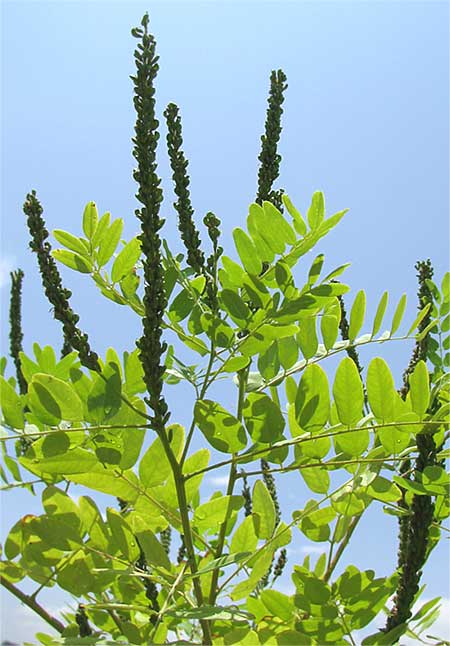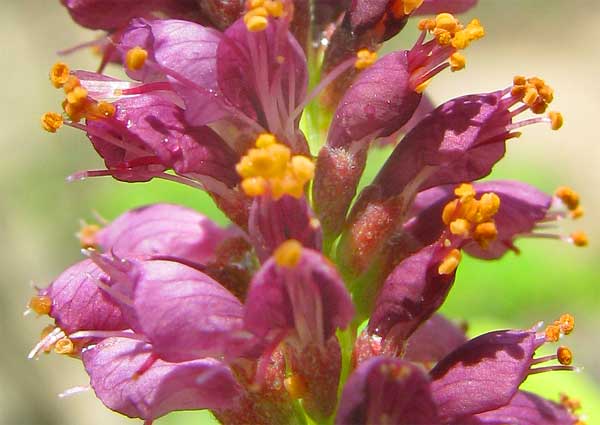Excerpts from Jim Conrad's
Naturalist Newsletter
from the August 4, 2008 Newsletter, issued from the forest near Natchez, Mississippi; elevation ~400ft (120m), ~N31.47°, ~W91.29°:
AMORPHA ON THE RIVERBANK
Wednesday I explored the Mississippi's muddy banks across the river from Natchez, on the Louisiana side. Riverbanks are always interesting not only because they constitute an extreme ecological situation where you might find organisms with special adaptations, but also you just never know what seed or other kind of propagule has floated down the river to take root beyond its normal distribution.
Where I was that day, at the river's very edge there was just mud and a few typical weeds, but then came a zone maybe 30 yards wide of slender bushes about ten feet high, and that zone transitioned above into remains of the former bottomland forest. The band of ten-ft-high bushes consisted of Sycamores and willows, and occasional pure patches of what you can see below:

That shrub's leaves were similar to those of Black Locust but its dark, slender spikes weren't like anything commonly seen around here. Though the main flowering time already had past, a couple of shrubs still bore flowering spikes, a close-up shown below:

The shrub's pinnately compound leaves probably cue you that the plant is a member of the Bean Family. However, the flowers don't have the typical bean- flower shape -- they're not papilionaceous, or "butterfly-like." In fact, each flower bears just a single petal, which you can make out arching partway atop and folding around the stamens' the filaments. Using Bean-Family-blossom terminology, one would say that the wings and keel are lacking, but the standard is well developed.
It's unusual to see a flower with just one petal, but that's typical of this genus of the Bean Family. The bush is AMORPHA FRUTICOSA, which seems to have no settled-on English name. False Indigo, Desert False Indigo, Indigo Bush Amorpha, Bastard Indigo... You're as likely to see it called by one name as another. The plant is similar to the real Indigo, but Indigo flowers (genus Indigofera) possess the normal five petals, and are papilionaceous. The Latin name amorpha is a good old Linnaean one, based on the Greek meaning "deformed," the deformation being that the flowers bear only one petal.
Amorpha fruticosa is widely distributed but usually not commonly encountered. It's pretty enough to be grown by some as an ornamental, and vigorous enough to be regarded as a potential invasive plant pest in some places.